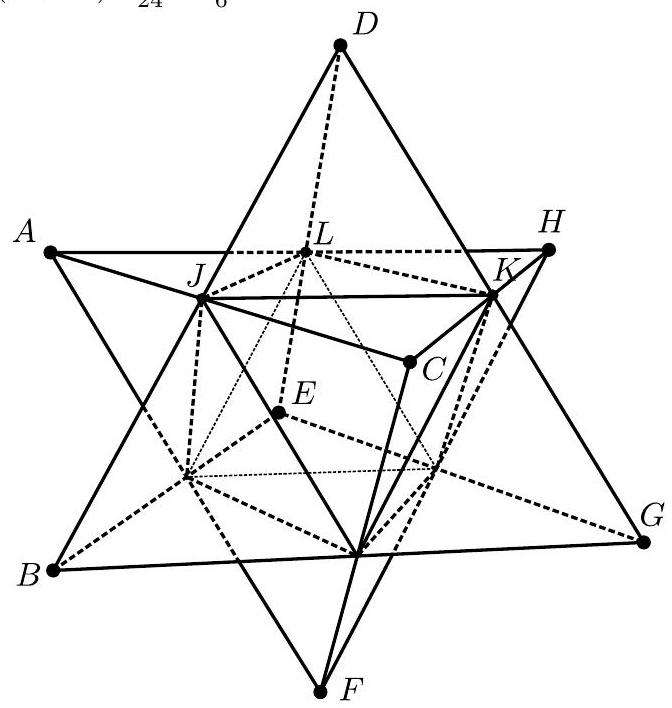Problem:
Two distinct regular tetrahedra have all their vertices among the vertices of the same unit cube. What is the volume of the region formed by the intersection of the tetrahedra?
Answer Choices:
A.
B.
C.
D.
E.
Solution:
Let the tetrahedra be and , and let be their intersection. Let squares and , respectively, be the top and bottom faces of the unit cube, with directly under and directly under . Without loss of generality, has vertices , and , and has vertices , and . One face of is , which intersects edges of at the midpoints , , and of , and , respectively. Let be the tetrahedron with vertices , and . Then is similar to and is contained in , but not in . The other three faces of each cut off from a tetrahedron congruent to . Therefore the volume of is equal to the volume of minus four times the volume of .
A regular tetrahedron of edge length has base area and altitude , so its volume is . Because the edges of tetrahedron are face diagonals of the cube, has edge length . Because and are
centers of adjacent faces of the cube, tetrahedron has edge length . Thus the volume of is
Let and be labeled as in the previous solution. The cube is partitioned by and into tetrahedra congruent to (one for every vertex of the cube), tetrahedra congruent to (one for every edge of the cube), and the solid . Because the bases and are equilateral triangles with the same area, and the altitudes to vertex of the tetrahedra and are the same, it follows that the volumes of and are equal. Moreover,
where is the distance from to the face , and . Therefore Volume , and thus the volume of is equal to .

The problems on this page are the property of the MAA's American Mathematics Competitions